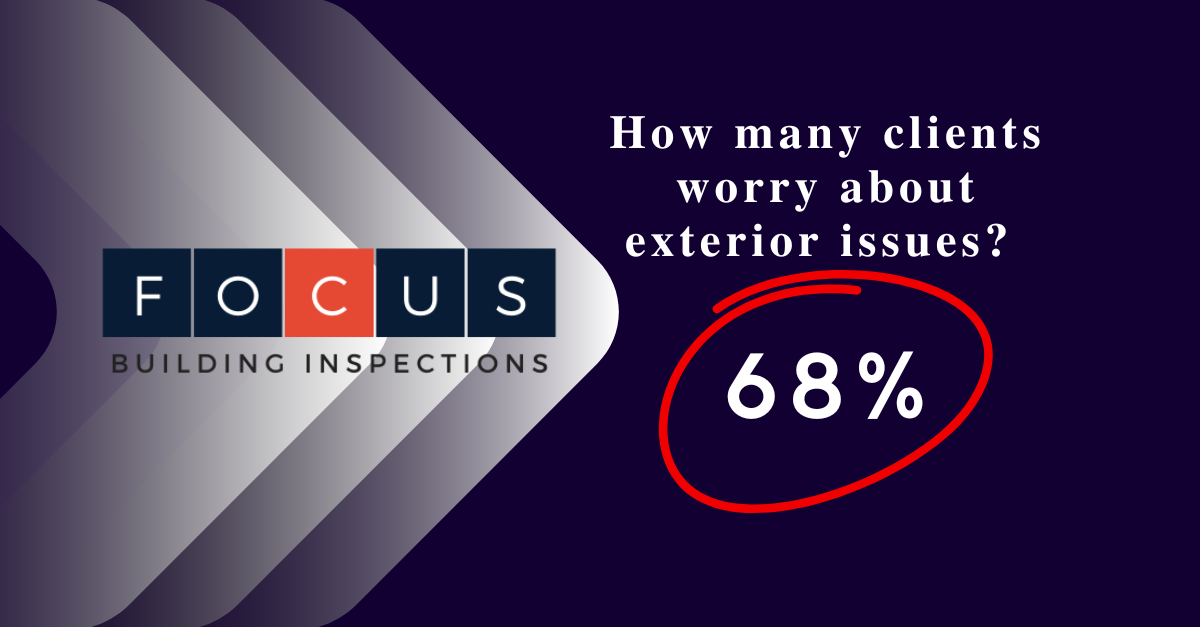What You Need to Know About Commercial Building Exterior Issues
68% of Our Clients Are Concerned About Commercial Building Exterior Systems — Here’s What You Need to Know
When clients schedule a commercial property inspection with us, 68% express concern about the building’s exterior systems—especially structural components and lot drainage. These areas may not be as visible or glamorous as interiors, but they’re fundamental to long-term asset health.
In this blog, we’ll break down:
Why exterior systems are such a concern in commercial inspections
The top 5 issues we commonly find
What our commercial exterior inspection includes
How to prevent costly exterior system failures
Let’s take a closer look at what’s going on outside the walls—and why it matters just as much as what’s inside.
Why Exterior Systems Raise Red Flags
While the interiors of a commercial building may be fully remodeled, it’s often the unseen exterior issues that pose the biggest threats. Buyers, tenants, and property managers all worry about the exterior because:
1. Water Is the #1 Enemy
Most exterior concerns stem from poor lot grading, damaged cladding, or compromised waterproofing. Water intrusion leads to rot, mold, settlement, and structural damage.
2. Foundation Problems Often Start Outside
Many foundation issues begin with improper lot drainage or missing gutters. If water isn’t being directed away from the building, it’s seeping toward the foundation.
3. Repairs Can Be Massive
Structural and exterior repairs—especially related to foundation movement or drainage redesign—can easily run into five or six figures.
4. It Affects Curb Appeal and Code Compliance
From crumbling sidewalks to stair rail violations, exterior defects can impact ADA compliance, tenant satisfaction, and leasing appeal.
5 Common Exterior System Issues in Commercial Properties
Here are the most frequent problems we encounter during commercial inspections:
1. Poor Lot Drainage and Grading
Inadequate slope away from the building, missing swales, or blocked stormwater drains are common. These contribute to water pooling, soil erosion, and eventual foundation movement.
2. Cracks in Foundations or Masonry
We regularly find horizontal, step, and vertical cracks in brick, CMU, and poured concrete. Some indicate normal movement—others signal major structural stress or settling.
3. Damaged or Improper Siding/Cladding
Whether EIFS, brick, metal panels, or vinyl, we see failed flashing details, gaps, improper fasteners, and water damage hidden behind facade materials.
4. Broken or Deteriorating Concrete Surfaces
Sidewalks, parking pads, stairs, ramps, and loading docks often show cracking, spalling, or displacement. These are tripping hazards, ADA violations, and signs of underlying soil or drainage problems.
5. Roof Drainage Issues (Not Just a Roof Problem!)
Many exterior problems stem from downspouts that empty too close to the building, clogged gutters, or flat roof edges without proper scuppers. Water accumulates at the base of the building and wreaks havoc.
What Our Commercial Exterior Inspection Includes
We take a top-down, ground-up approach to exterior inspections. Here’s what we evaluate during our walk-through survey:
✔ Foundation and Wall Structure
We visually inspect the foundation and load-bearing exterior walls for cracks, displacement, bulging, efflorescence, or signs of structural shifting.
✔ Cladding and Weatherproofing
We check siding, brick, stucco, or panel systems for deterioration, damage, sealant condition, improper termination, and flashing failures.
✔ Windows, Doors, and Penetrations
We examine commercial-grade doors, storefront systems, and windows for gaps, frame condition, water stains, and flashing integrity. These areas are frequent leak points.
✔ Lot Drainage and Grading
We evaluate grading slopes, swales, surface water direction, French drains (if visible), and site design features that affect water flow toward or away from the building.
✔ Pavement, Ramps, and Curbs
We assess asphalt and concrete condition in walkways, parking lots, and entries. ADA-compliance concerns (such as ramp slope or trip hazards) are noted.
✔ Stairways, Handrails, and Decks
We check the structural soundness, safety features, and code compliance of any exterior stairs, ramps, and elevated surfaces.
✔ Vegetation and Root Damage
We inspect for invasive roots damaging slabs or foundations and note trees or shrubs that direct water toward buildings or cause façade deterioration.
✔ Opinion of Cost & Repair Planning
We document defects, provide images and explanations, and include a non-binding Opinion of Cost where repairs are likely needed—helping you prioritize risk and expense.
How to Stay Ahead of Exterior System Failures
While you can’t change how a lot was originally graded or how a wall was built, there’s still a lot you can do to prevent problems from escalating:
➤ Control Water at the Source
Ensure all downspouts direct water at least 5–10 feet from the building. Extend leaders and use splash blocks where appropriate. Keep gutters clean and functional.
➤ Maintain Slope Away from Foundation
Soil or landscaping should slope at least 6 inches away from the building over the first 10 feet. Regrading is a simple and effective fix that many owners overlook.
➤ Seal Cracks and Joints Promptly
Hairline cracks can grow quickly. Use commercial-grade sealants on joints, expansion gaps, and visible fissures in concrete or masonry.
➤ Inspect the Exterior Annually
Catch small problems before they become big ones. Look for new cracks, discoloration, or water trails after rain. Even minor signs of erosion can point to deeper drainage issues.
➤ Invest in a Drainage Plan If Needed
If your property consistently has standing water or basement leaks, it may be time for a civil engineer or drainage contractor to assess the site for proper stormwater management.
Conclusion: What Happens Outside the Building Matters Inside the Building
When exterior systems fail—especially drainage and foundational support—they eventually impact every other system in the building. By inspecting, maintaining, and planning for upgrades, you can protect your commercial investment from the outside in.
Need a Commercial Exterior Inspection?
Your building’s first line of defense is its exterior—don’t let hidden issues erode your investment. With 68% of our clients expressing concerns about drainage, foundations, and exteriors, it’s clear that outside risks quickly become inside problems.
At Focus Building Inspections, we deliver thorough, top-to-bottom commercial exterior evaluations to help you catch problems early and plan smart solutions. Protect your investment from the ground up—starting now.
Schedule with us today or reach out for a personalized walkthrough and full report. Whether it’s a pre-purchase inspection or annual check-up, we’ve got your back.
Questions This Article Answers
Why are exterior systems a top concern for commercial building buyers and owners?
How does water intrusion damage commercial buildings from the outside?
What foundation issues can be caused by poor lot drainage?
What is the financial impact of repairing structural and exterior defects?
How can damaged exterior elements affect ADA compliance and tenant satisfaction?
What are the top five common exterior system issues found in commercial properties?
What does a commercial exterior inspection from Focus Building Inspections include?
How can building owners proactively maintain lot drainage and prevent water damage?
Why is it important to inspect and maintain pavement, stairs, and ramps?
How can early intervention help avoid massive exterior repair costs?
Bibliography / Resources
American Society of Civil Engineers. (n.d.). Grading and site design for commercial properties. ASCE. Retrieved April 25, 2025, from https://www.asce.org/communities/institutes-and-technical-groups/geoinstitute/technical-committees/grading
Environmental Protection Agency. (n.d.). Managing stormwater runoff in urban areas. EPA. Retrieved April 25, 2025, from https://www.epa.gov/green-infrastructure/manage-stormwater
International Association of Certified Home Inspectors. (n.d.). Inspecting commercial exterior systems. InterNACHI. Retrieved April 25, 2025, from https://www.nachi.org/comsop.htm
International Code Council. (2021). Commercial building exterior code standards. ICC. Retrieved April 25, 2025, from https://codes.iccsafe.org/codes/i-codes
National Ready Mixed Concrete Association. (n.d.). Exterior flatwork and drainage maintenance. NRMCA. Retrieved April 25, 2025, from https://www.nrmca.org/association-resources/concrete-exterior-maintenance



